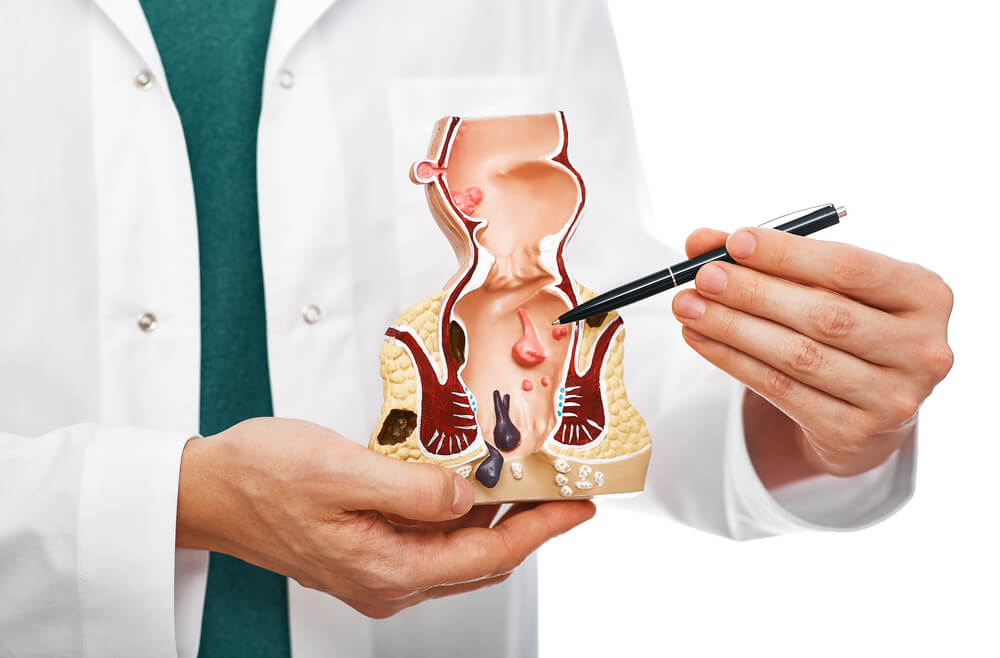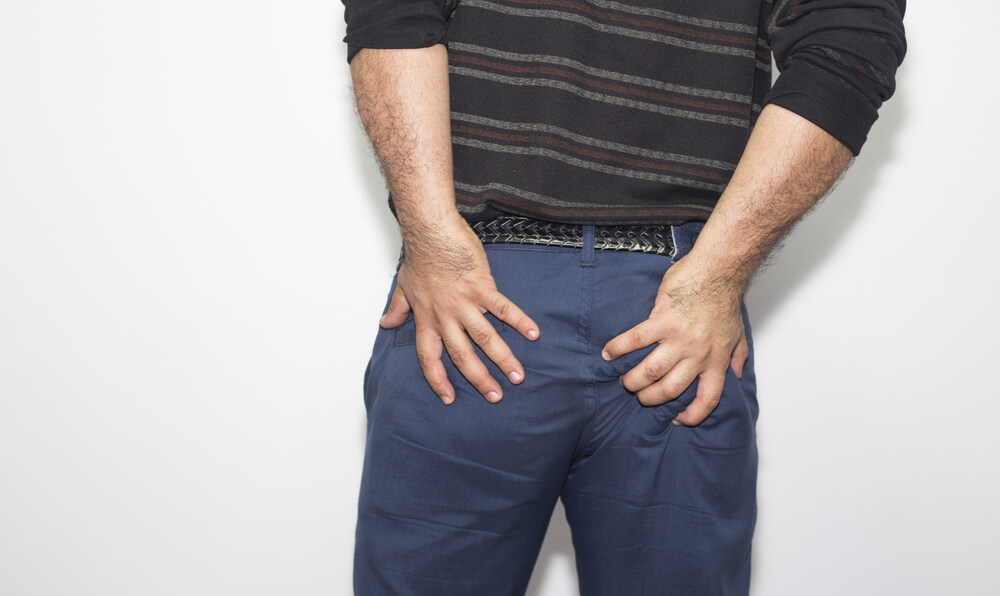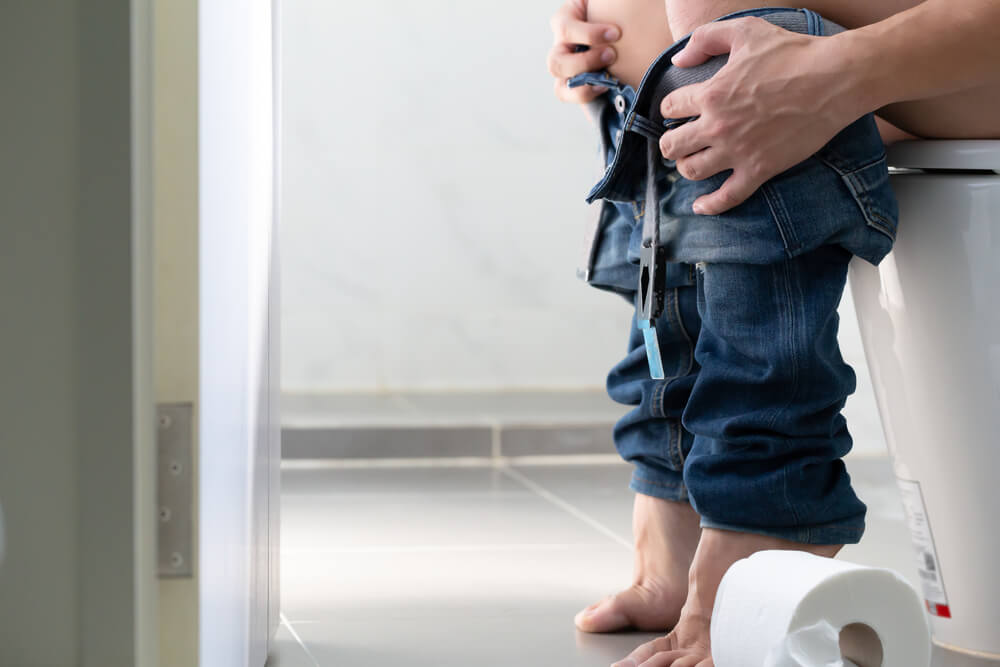If you are experiencing pain and discomfort during a bowel movement, you may have a thrombosed hemorrhoid. These circles of lumps or single lumps are located either in the tissue outside of your anus (these are known as external hemorrhoids) or inside of the anus. Although a thrombosed hemorrhoid is typically not dangerous, it can cause severe pain and discomfort for the individual. In this article, you will learn more about this common condition, the common causes, symptoms, and potential thrombosed hemorrhoid treatment.
That said, if you feel intense pain regularly, we recommend consulting a reliable healthcare professional. If you are looking for the best treatment for hemorrhoids, we strongly suggest experts such as Dr. Shapiro and his team at Advanced Surgical Physicians.
With that in mind, here is everything you need to know about dealing with a thrombosed hemorrhoid.
What is a Thrombosed Hemorrhoid?
The hemorrhoidal disease, also called “hemorrhoids” occurs due to abnormal distension of your hemorrhoidal veins underneath the lower rectum’s and anus’s mucosa. Even though the term “hemorrhoids” typically refers to the disease, hemorrhoids are clusters of smooth muscle, vascular structures, and elastic connective tissue. Altogether, these clusters comprise the anal cushions.
The function of hemorrhoids is to provide protection to the anal sphincter and prevent incontinence when a person increases abdominal pressure. For instance, abdominal pressure is increased when you cough or sneeze.
Some people may experience swollen or protruding anal cushions, which are known as piles or hemorrhoids. So, what is a thrombosed hemorrhoid?
In short, a thrombosed hemorrhoid is when a blood clot develops inside the patient’s vein, obstructing normal blood flow. Due to this, the patient will experience anal tissue swelling and pain. As mentioned, a thrombosed hemorrhoid is not dangerous, but it can be severely painful, and if ulcerated, it can lead to rectal bleeding.
Now that you are aware of “what is a thrombosed hemorrhoid?”, here are two types to differentiate. These include internal and external hemorrhoids.
- Internal hemorrhoids occur above the dentate line, inside the lower rectum. Typically, thrombosed internal hemorrhoids are not as common as external hemorrhoids. If they do not protrude from the person’s anal canal, internal hemorrhoids are invisible from the outside.
- External hemorrhoids, on the other hand, are the most common type of hemorrhoids. They appear on the anal canal verge, and when thrombosed, they are dark and bluish in color. Sometimes, the boosted pressure within external hemorrhoids can result in necrosis and ulceration of the upper skin layer, leading to anal bleeding.

What is Causing a Thrombosed Hemorrhoid?
There are many reasons why you may be dealing with a thrombosed hemorrhoid. Here are some possible triggers that can cause boosted pressure on the veins in the anus:
- Physical exertion (for example, lifting heavy weights)
- Constipation (which can result in straining)
- Prolonged sitting
- Pregnancy and childbirth
- Loose stools or diarrhea
- Anal intercourse
- Obesity (or having too much body fat)
- Irregular toilet use
Once you have hemorrhoids, you may be at risk of developing a thrombosed hemorrhoid. Unfortunately, the reason why some individuals develop blood clots in hemorrhoids and why others do not remain a mystery.
What are the Symptoms of a Thrombosed Hemorrhoid?
Often, a thrombosed hemorrhoid develops on the outside (or the inside) of the anus, and it occurs as a small lump. Due to the blood clot inside the hemorrhoid, the lump may have a dark bluish tint.
That said, a regular hemorrhoid that is not thrombosed will have a rubbery appearance and no bluish tint. Some typical symptoms of a thrombosed hemorrhoid may include:
- Itching around the anus
- Lumps or swelling around the anus
- Bleeding with a bowel movement
- Experiencing pain when having a bowel movement, walking, or sitting
Usually, the pain should subdue after the initial 24 hours. However, if you are experiencing severe pain even after 48 hours, you may need expert advice.
Thrombosed Hemorrhoid Treatment Options
The good news is that in most cases, thrombosed hemorrhoids will heal on their own. You may need to be patient and wait for around two to three weeks for a thrombosed hemorrhoid to disappear completely. While healing, we suggest the following self-care tips:
- Take sitz baths to cleanse the area around your anus.
- Make some dietary changes to keep your stool soft (for instance, increase your fiber intake and consume enough fluids to stay hydrated).
- Avoid pushing or straining when using the toilet (instead, lean forward and relax your body. Allow the stool to come out without excessive straining).
Refrain from draining a thrombosed hemorrhoid yourself, as this can decrease the healing time.
If you do not see improvements and the pain persists, you may want to consult with your healthcare provider for alternative thrombosed hemorrhoid treatment. In some cases, topical treatments such as creams and ointments may be beneficial. For instance, you can use lidocaine or AneCream to treat hemorrhoids at home. According to research, a good alternative to lidocaine is nifedipine or Adalat CC.
As mentioned, draining a thrombosed hemorrhoid yourself should be avoided. Since hemorrhoids can bleed and cause severe pain, we recommend leaving the procedure to the professionals. Although it is possible, refrain from popping a thrombosed hemorrhoid to avoid further complications.
With that in mind, sometimes, a hemorrhoid will start bleeding by itself. If you start experiencing a thrombosed hemorrhoid burst that is causing you intense pain, reach out to your doctor.
If at-home thrombosed hemorrhoid treatment options are not effective for you, discuss surgery options with your healthcare provider. Luckily, the blood clot removal procedure is fast and simple. If you are experiencing tremendous pain, surgery may be a viable option for you. The surgery is usually performed in the doctor’s office, and it is a safe and complication-free way to alleviate symptoms. Another benefit of surgery is that it helps keep thrombosed hemorrhoids from reappearing. In most cases, patients are satisfied with the surgical procedures.
Thrombosed Hemorrhoid Burst: What’s Next?
If the hemorrhoid is filled with excessive amounts of blood, it may burst. Although this is not serious in most cases, a thrombosed hemorrhoid burst can be extremely painful. We suggest reaching out to your doctor immediately.
A burst may also happen if you begin popping the thrombosed hemorrhoid. As mentioned many times before, popping the hemorrhoid at home can cause unnecessary complications such as bleeding, and perianal tissue infection. Make sure to leave the drainage to the professionals.

FAQ
Is draining a thrombosed hemorrhoid yourself possible?
Yes, it is possible, but we recommend avoiding it. Instead, consult with your doctor and discuss your options. If your condition is mild, you may be advised to wait for the hemorrhoid to heal on its own. Alternatively, you may want to consider surgery.
How can I prevent hemorrhoids?
There are many ways to prevent hemorrhoids. For example, you can do some or all of the following:
- Consume a high-fiber diet (choose more vegetables, fruits, and whole grains such as millet and brown rice).
- Hydrate with water to keep your stools soft and to avoid constipation.
- Try fiber supplements such as methylcellulose or psyllium.
- Avoid straining on the toilet.
- Exercise regularly, but avoid very heavy weights.
- Use the toilet as soon as you feel a bowel movement.
- Avoid sitting for too long (especially on the toilet, as this can boost the pressure on the anal veins).
Whether you are experiencing severe pain due to hemorrhoids or if you have further questions related to your health, schedule an appointment with our team of professionals today.


